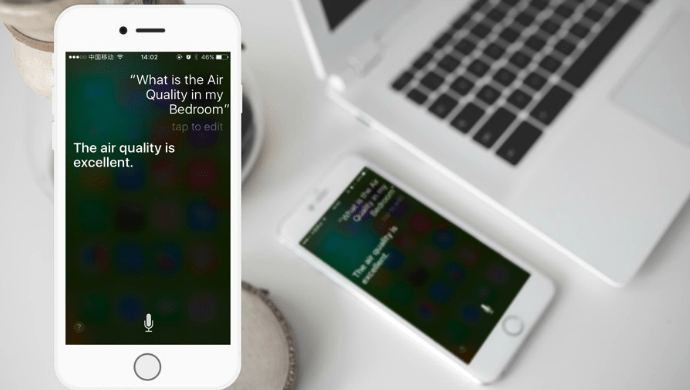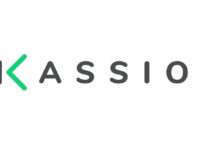Kaiterra creates IoT-powered devices that measure a variety of air pollutants, for consumers, businesses and industrial use

In cities world over, air pollution is posing huge threat not just to the human beings but also to other living creatures on this earth. Thousands of people are killed by inhaling polluted air and millions develop serious ailments. As per a research, about 92 per cent of the population are breathing in unhealthy air and 17,280 people die from air pollution every day.
Kaiterra Global, a Beijing-headquartered startup co-founded by Swiss entrepreneur Liam Bates, intends to bring in a change. The company — which has developed IoT-powered air quality monitors that measure a variety of air pollutants for consumer, business and industrial use — recently entered India.
Startagist.com recently interacted with Bates over email to know more about its products and its India business.
Edited excerpts are below:
What is Kaiterra and who are the people behind this venture?
Kaiterra is a global startup trying to fix one of the world’s biggest and most important problems, air pollution – an issue that causes more deaths than malaria, HIV/AIDS, and road accidents, combined! Kaiterra creates highly-accurate monitors that measure a variety of air pollutants, for consumers, businesses and industrial use. These devices allow users to better understand their own air quality, while simultaneously sending a constant stream of pollutant data to the cloud, which is processed, then combined with data from official monitoring stations, satellites and other sources, to create maps of outdoor air quality.
The company was founded in 2014, and in 2016 became the smallest company to ever enter the Apple stores (6 people at the time!)
What opportunities are they seeing in India?
Kaiterra opened an Indian office in 2017. India has a severe air pollution problem, which makes it a high priority for us. Our goal is to improve outdoor air quality worldwide and so India is a logical place to be.
Over the past few years, India has been a big market for Kaiterra, so for a while, we’ve wanted to be able to have a local office to provide better service to our customers there, as well as carry out local research. We’re confident that the new office will provide our Indian users with swift and high-quality service. It’s also a great opportunity to help with air quality education in India.
What are your different products?
With regard to hardware products, the Laser Egg line is our consumer line – a series of products to help users better understand the air quality in their home. A series of new products are also in the works and will soon be released to provide complete monitoring solutions. Finally, a portion of the work done at Kaiterra is research related, to better understand and ultimately improve air quality.
Can you further talk about Laser Egg? And what are its unique features? How is it different from other air quality monitors?
The Laser Egg is the world’s most popular smart air quality monitor with high accuracy particulate matter (PM2.5) detection. What we can’t see can still harm us. Dust, PM2.5 smoke, and other particles constantly affect the air around you and in your home. The Laser Egg tells you instantly and accurately what’s in the air so that you can make sound decisions to improve your environment.
The Laser Egg uses laser-based light scattering to individually count particles in the air as they enter the device, and calculate PM2.5 concentrations based upon these measurements. This allows for extremely fast measurements, with high accuracy readings calculated every 0.1 seconds.
We take our air seriously. The Laser Egg has been carefully tested to ensure your home is protected. It can give particulate concentrations and AQI readings that fall within +/- 10% of the readings from much more expensive government monitors.
 At home or on the go, you can pair your Laser Egg with the Kaiterra app for greater convenience and more control. You can view home and local air quality readings with just a tap. The app also allows you to see historical graphs by the minute, hour or day and helps you make smarter decisions for your home that last.
At home or on the go, you can pair your Laser Egg with the Kaiterra app for greater convenience and more control. You can view home and local air quality readings with just a tap. The app also allows you to see historical graphs by the minute, hour or day and helps you make smarter decisions for your home that last.
One unique feature of the Laser Egg is its Smart Home capabilities. It supports Apple’s HomeKit technology that enables it to safely and seamlessly work with your home’s other smart appliances. No more worrying about when to turn on your air purifier if the air pollution spikes. Or when to turn on your humidifier if the air becomes too dry. The Laser Egg enables a connected ecosystem for a protected home and peace of mind.
What tech has been used in Laser Egg?
The amazing technology behind the Laser Egg’s superior ability to detect extremely small particulate matter in the air is laser-based light scattering. PM2.5, which the Laser Egg can measure with high accuracy, are particles suspended in the air that are 2.5 micrometers and smaller. For reference, a strand of human hair is 50 micrometers in diameter. Measuring such fine particles calls for perfecting the use of laser technology harmonized with efficient algorithms to accurately provide the user with information that they can use to take decisions about their environment.
Do you have both B2B an dB2C offerings? Who are your target customers?
Yes, B2B forms a large part of Kaiterra business, clients include schools, hospitals, office buildings and commercial spaces.
Who are your partners and clients in India?
Kaiterra India is working with several Resellers and Partners in India. The iZenica Apple Premium Reseller, Nirvana Being of Vogmask fame, BreatheEasy Labs, Oriental Marketing Company, N-Ray are some of the sales channel partners we are working with for our B2B and B2C sales. For our outdoor air quality monitoring and mapping projects, we have tie-ups with EPoD that is a research group set up by Harvard faculty. We’re constantly talking to people in the air quality community and the government to build larger networks and extend our reach.
What is your go-to-market strategy in India? Are you expanding to new markets?
Our strategy in India is to work through a wide network of distributors and resellers who represent us in the India market. The core team in India focuses on developing and maintaining this network while pushing digital reach through an in-house marketing team. Awareness of air quality in India is low, though rapidly growing year on year. Pushing awareness building campaigns is high on the list of priorities.
Our products are sold in 14 countries that helps in building credibility in a day when there are so many new players entering the market. We also now have a service and customer care team in India and this helps people be assured that there’s a team closely to help with troubleshooting or repairs.
Both our consumer grade products – the Laser Egg 2 and Laser Egg 2+ – are products that are well suited for the Indian market. The Laser Egg 2+, in particular, is currently the only air quality monitor in its category in the Indian market that gives a TVOC reading which is quite a big issue in India households.
How is India market different from China in this segment? How is the customer behavior different from each other?
 The main difference between the India and China markets is with levels of awareness. Once people understand and realize how much of a health hazard the air is they quickly get on board with a lifestyle of air quality monitors, masks and purifiers. Everyone does want to keep their family safe at the end of the day.
The main difference between the India and China markets is with levels of awareness. Once people understand and realize how much of a health hazard the air is they quickly get on board with a lifestyle of air quality monitors, masks and purifiers. Everyone does want to keep their family safe at the end of the day.
Awareness and concern about volatile organic compounds is another big difference. In China, people are very concerned about VOCs in their home and are constantly monitoring it.

















































